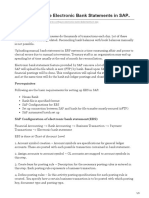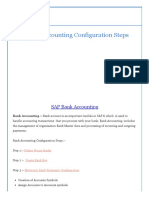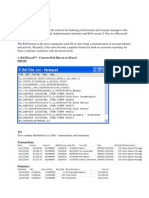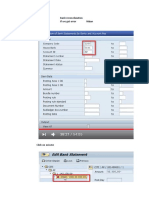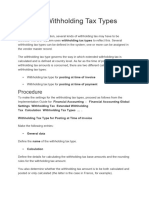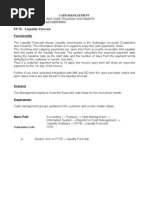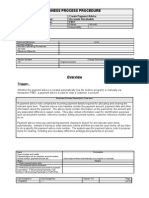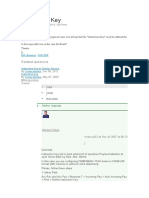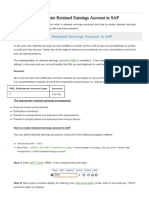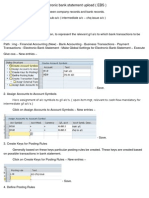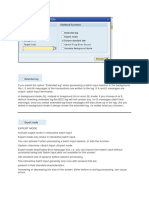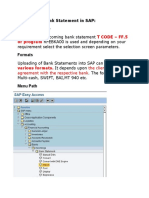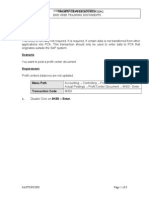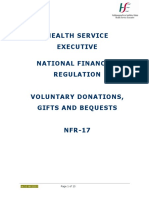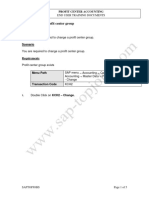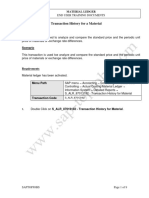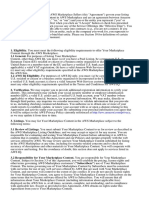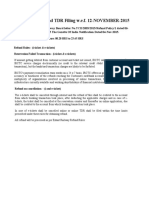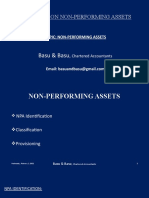11/29/2017 How to configure Electronic Bank Statements in SAP..
| SAP Blogs
Products
Products Industries
Industries Support
Support Training
Training Community
Community Developer
Developer Partner
Partner
About
About
Home / Community / Blogs + Actions
How to configure Electronic Bank Statements
in SAP..
April 10, 2014 | 8,387 Views |
ANUPAM JUNIWAL, ACA,CISA,PMP
more by this author
SAP ERP
FIN (Finance) | configuration | design | development | enterprise resource planning | sap erp | sap erp financials | SAP Finance And
Controlling Accelerator
share
0 share
0 tweet share
0
Follow
Introduction
https://blogs.sap.com/2014/04/10/how-to-configure-electronic-bank-statements-in-sap/ 1/5
�11/29/2017 How to configure Electronic Bank Statements in SAP.. | SAP Blogs
Medium to large scale businesses do thousands of transactions each day. Lot
of these transactions are banking related. Reconciling bank balances with
book balances manually is not possible.
Uploading manual bank statement in ERP system is a time consuming affair
and prone to clerical errors due to manual intervention. Treasury staff in an
organisation may end up spending lot of time usually at the end of month for
reconciliation.
Electronic bank statement feature provided by SAP can save a lot of time and
is error free. SAP will upload the file which is sent (FTP) by bank. Based upon
SAP configurations financial postings will be done. This configuration will
upload the statement automatically and at the same time will do the bank sub
ledger postings and clearing postings.
Prerequisites
Following are the basic requirements for setting up EBS in SAP:
House Bank
Bank file in specified format
SAP Configurations for EBS
Set up connection between SAP and bank for file transfer mostly
secured (sFTP)
SAP automated batch set up
SAP Configuration of electronic bank statement(EBS)
Financial Accounting –> Bank Accounting –> Business Transaction –>
Payment Transactions –> Electronic bank statement
EBS is done at Chart of Account Level
1. Account symbol creation – Account symbols are specifications for general
ledger accounts. These are posted with each possible transaction contained in
bank statement.
2. Assign accounts to account symbol – GL accounts are mapped to account
symbols in this step.
3. Create keys for posting rule – Description for the necessary posting rules is
entered in this step. Each posting rule represents a business transaction.
4. Define posting rules – In this activity posting specifications for each posting
rule is created. You specify how a certain business transaction is to be posted
https://blogs.sap.com/2014/04/10/how-to-configure-electronic-bank-statements-in-sap/ 2/5
�11/29/2017 How to configure Electronic Bank Statements in SAP.. | SAP Blogs
with which posting key, document type and posting type.
5. Create transaction type – Transaction type contains the external transaction
type. External transaction types are codes used by banks to specify the
business transaction in bank file. Transaction types in turn are link between
External Transaction Types, Posting Rules and Interpretation Algorithms.
Interpretation algorithm interprets the note to payee line in bank statement and
accordingly clears the open items accordingly.
6. Assign bank account to transaction types – Last step involved is assigning
bank accounts with transaction types as defined above. This step contains the
list of external transaction which are valid for a house bank. Please note that
assignment is of Bank account number and Bank Routing Number and not of
GL account in this step.
Summary Relationship
GL Account –> Account Symbol –> Posting Rule –> Transaction Type (linked
with bank account number and algorithm) –> External Transaction Codes
File format
There are many EBS file format currently being used. Most commonly used
are BAI, MT940 and Multi Cash formats.
BAI format is a standard format and recommended by SAP. Main difference
between BAI and other formats is that it allows file to be processed even if
some of the external transaction codes are not available in SAP. System will
post all those transactions which have valid external transaction codes.
Missing codes need to be mapped and the statement need to be reprocessed
using standard SAP transaction code FEBAN (Edit bank statement).
Illustration
Company X has decided to use SAP delivered Electronic Bank Statement
processing for uploading and reconciling its daily bank statement. You have
been asked to configure EBS upon considering below details:
Company received listing of external transaction codes (BAI codes)
used by bank
External transaction code 100 signifies Agency fees
External transaction code 101 signifies interest earned
Bank account number is 1122334455 and routing number is 2778899 of
the house bank
https://blogs.sap.com/2014/04/10/how-to-configure-electronic-bank-statements-in-sap/ 3/5
�11/29/2017 How to configure Electronic Bank Statements in SAP.. | SAP Blogs
Configuration steps
Define the account symbol for
– Agency Fees as AGENCY
– Interest Earned as INTEREST
– House bank as HOUSEBK1
Link the account symbols with corresponding GL accounts
Create posting key for
– Agency Fees as ZAGY
– Interest Earned as ZINE
Define the posting rule for
– Agency Fees (ZAGY) with posting key 40 assigned with account
symbol AGENCY and posting key 50 assigned with account symbol for
House bank HOUSEBK1
– Interest Earned (ZINE) with posting key 40 assigned with account
symbol INTEREST and positng key 50 assigned with account symbol for
House bank HOUSEBK1
Create a transaction type as TRAN1
Assign transaction type
– 100 with posting rule ZAGY along with Interpretation Algorithm as 12
– 101 with posting rule ZINT along with Interpretation Algorithm as 12
Assign bank account number and routing number with transaction type
TRAN1
Alert Moderator
https://blogs.sap.com/2014/04/10/how-to-configure-electronic-bank-statements-in-sap/ 4/5
�11/29/2017 How to configure Electronic Bank Statements in SAP.. | SAP Blogs
1 Comment
You must be Logged on to comment or reply to a post.
SUMIT MISHRA
March 7, 2015 at 7:27 am
Good Document would have been more better if some screen shots of configuration also
included
Share & Follow
Privacy Terms of Use Legal Disclosure Copyright Trademark Sitemap Newsletter
https://blogs.sap.com/2014/04/10/how-to-configure-electronic-bank-statements-in-sap/ 5/5
